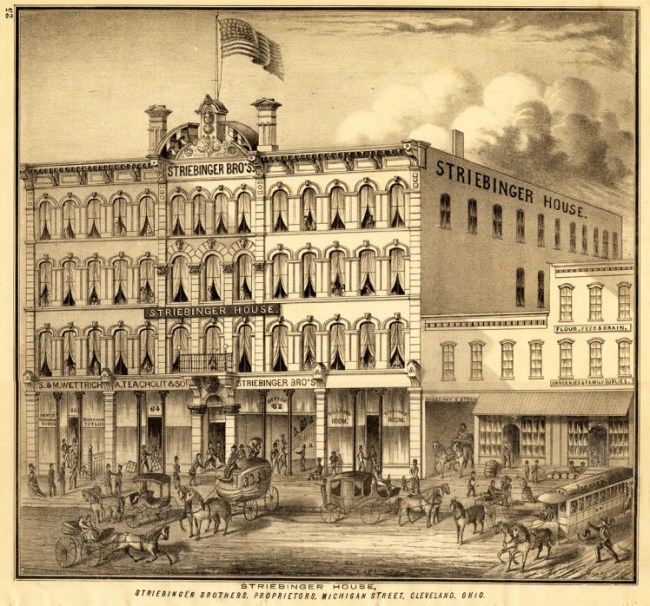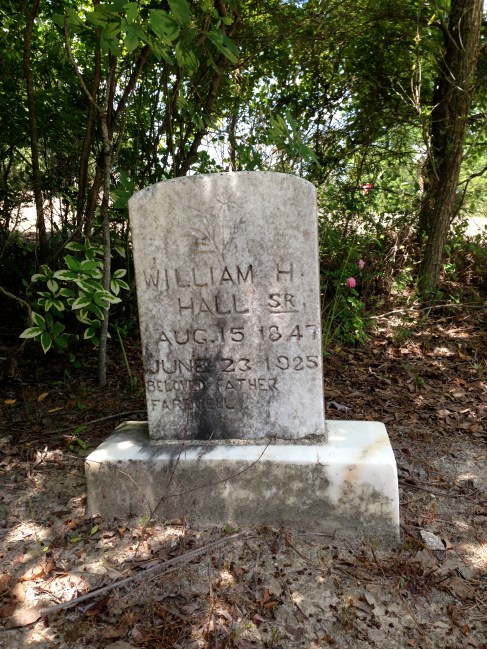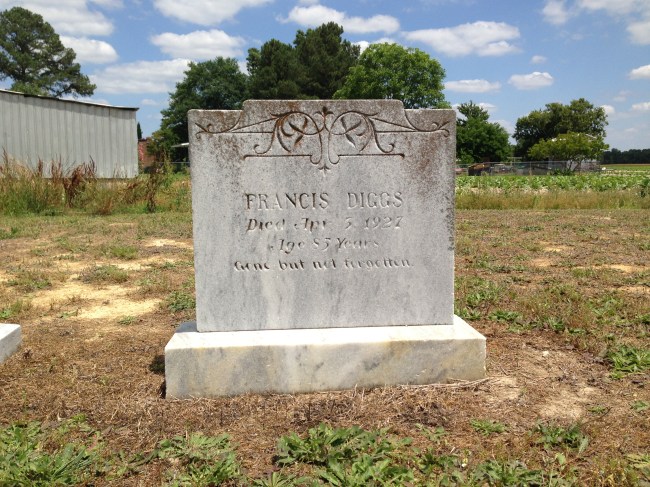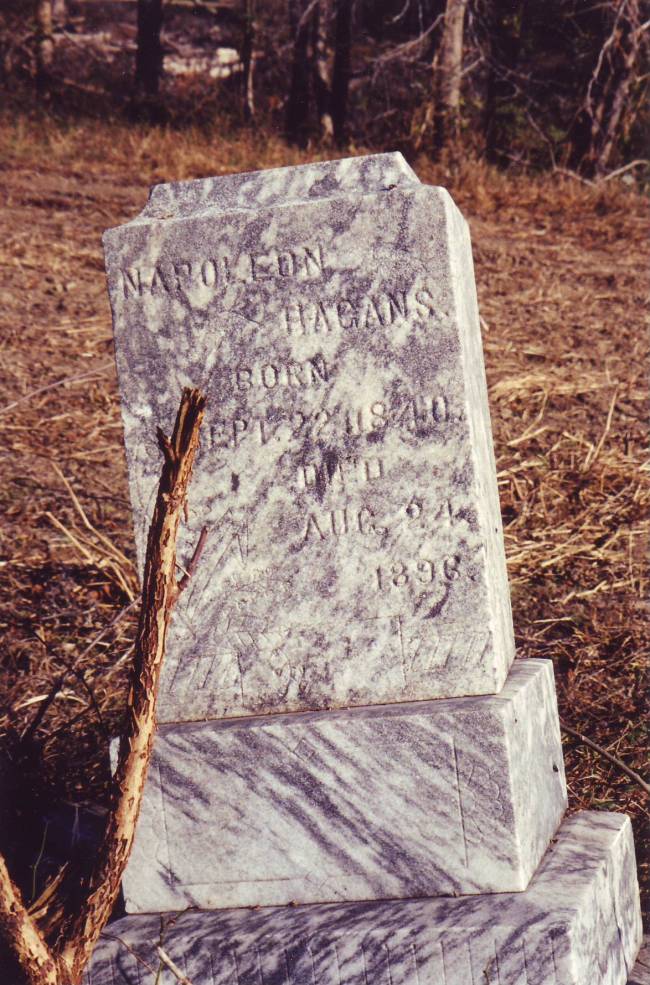He is devoted to his call in the ministry.
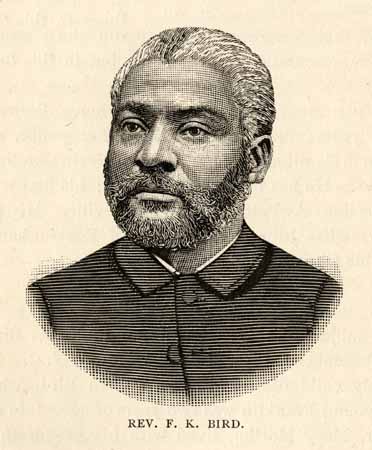
The subject of this sketch, Franklin Kesler Bird, was born December 1, 1856, at Rutherfordton, N. C. He was the only child of his father, William Bird, who died when young Franklin was two years of age. He and his mother, Mary Martha, lived with his grandfather, the “Blacksmith,” Wylie Morris, until 1867, when his mother was married to Cain Gross.
By early industry and economy Wylie Morris succeeded in purchasing his freedom for $2,000, and marrying a freeborn woman. All of Franklin’s relatives were freeborn, and strict members of the Methodist Episcopal Church, South, until after the close of the war, when they connected themselves with the African Methodist Episcopal Zion Church, which remains the choice of the family. Young Franklin connected himself with the Church of which he is now a member at the age of eleven years, and soon afterward manifested much usefulness and devotion. His stepfather being engaged yearly in a large farming business, in which Franklin was regularly employed, together with the meagre school system of his home section, deprived him of early school advantages, except one or two months occasionally in some private or public school.
In 1869 his grandfather moved and settled at Newport, Tenn. In 1871, while visiting him, he was favored with one year’s instruction in the high school of that place, under Professor William H. McGhee as instructor. On his return to his native home he had made sufficient advancement to obtain a third grade teacher’s certificate, and taught his first school at Mykle’s Chapel Schoolhouse, near his home. This was the small beginning of an eventful life of public usefulness.
It was while teaching this small school that he grasped the opportunities of educating himself. He paid out of his income for private instruction to one Professor –, a white teacher, at the rate of $2 for three recitations each week at night, on condition that he would never divulge his teacher’s name. During this time he succeeded in completing his studies in arithmetic, grammar, geography, history, etc. He also cultivated his talent in vocal music, and while teaching the same his fame had reached Marion, N. C., from which place he received a call to the principalship of a large school, which gave him from five to six months’ employment in each year. He remained at the head of this school for six years consecutively, during which time he found his way to Biddle University, Charlotte, N. C., where he spent four terms, paying for the same with the money he obtained by teaching. He professed faith in Christ June 24, 1874, served in every local official capacity in his church, was licensed to exhort July 4, 1876; received local preacher’s license in November of the same year, and joined the North Carolina Annual Conference of the African Methodist Episcopal Zion Church, at Salisbury, N. C., December 4, 1877. He took his first appointment in the following year at the hands of his Presiding Elder. Rev. S. S. Murdock, to a part of the Marion Circuit.
At the following Conference, Goldsboro, N. C., he was ordained deacon and appointed in charge of the entire circuit. This work was so enlarged that it became the work of two pastors at the end of his two years’ administration. At Lincolnton, N. C., in 1879, when the North Carolina Conference was divided, and the Central and North Carolina Conferences formed, he was appointed to Wilson Station, in the North Carolina Conference. At the end of the year the property, which had been long involved in litigation, was redeemed, and the church doubled in membership. At Tarboro, N. C., 1880, he was ordained to the office of an elder and stationed at Concord, N. C., where he rendered efficient service to Bishop C. R. Harris, as business manager of the Star of Zion. On April 7, of this year, at Wilson, N. C., he was united by marriage to Miss Agnes M. Barnes, a student of St. Augustine Institute, Raleigh, N. C.
During this year he also met President Mattoon, D.D., of Biddle University, with whom he arranged, and in the next year reentered the university, filling at the same time the pastorate at Biddleville Station. He remained in the university five terms, during which he completed the normal course and advanced rapidly in the classical course. He was considered by the faculty as being one of the brightest students in that institution. He is yet a student, and has mastered many of the studies most helpful to him in his work by persistent effort and private instructions.
In February, 1883, Bishop Hood secured his services by transfer, and stationed him at the African Methodist Episcopal Zion Church, Exchange Street, Worcester, Mass., where he rendered more than three years’ successful service, to the general satisfaction of the people. He was then removed to the church, corner Broad and Gregory Streets, Bridgeport, Conn. Here he had a splendid financial success. At the end of two years, feeling that his services could be more effective in the Southern field, he transferred back to his native State, and has since filled with success the pastorates at St. Paul Station, Tarboro, N. C., Farmer’s Temple, Washington, N. C., and St. James Station, at Goldsboro, N. C. He has filled the position of secretary in all of his Conferences, receiving all his ordinations under the administration of Bishop Hood, and has been in attendance upon the last three General Conferences, where he was an able representative of his Church and race.
While at the General Conference at Pittsburg, Pa., May, 1892, he received notice from the President of Bethany College, at Lumberton, N. C., that the trustees of said institution had, without solicitation, conferred upon him the degree of Divinitatis Doctor. Upon refusing to accept their proffer he found on his arrival home the certificate awaiting him at the express office. At his Conference on December 6, 1892, he was unanimously elected to the position of presiding elder, as the result of a long-expressed desire upon the part of the ministers, and was appointed Presiding Elder of the Wilmington District of the North Carolina Conference, where he is doing a great work in building up and extending the borders of Zion. He is unassuming in public life, affable, congenial in disposition, self-sacrificing, and devoted to his calling in the ministry.
From J.W. Hood, One Hundred Years of the African Methodist Episcopal Zion Church; or, The Centennial of African Methodism (1895).
——
In the 1860 census of Broad District 2, Rutherford County: Wiley Morris, 57, Louisa, 42, Wily, 23, Mary, 18, Wm., 17, Adelade, 14, David, 11, Franklin Keesler, 3, and Martha Morris, 20.


